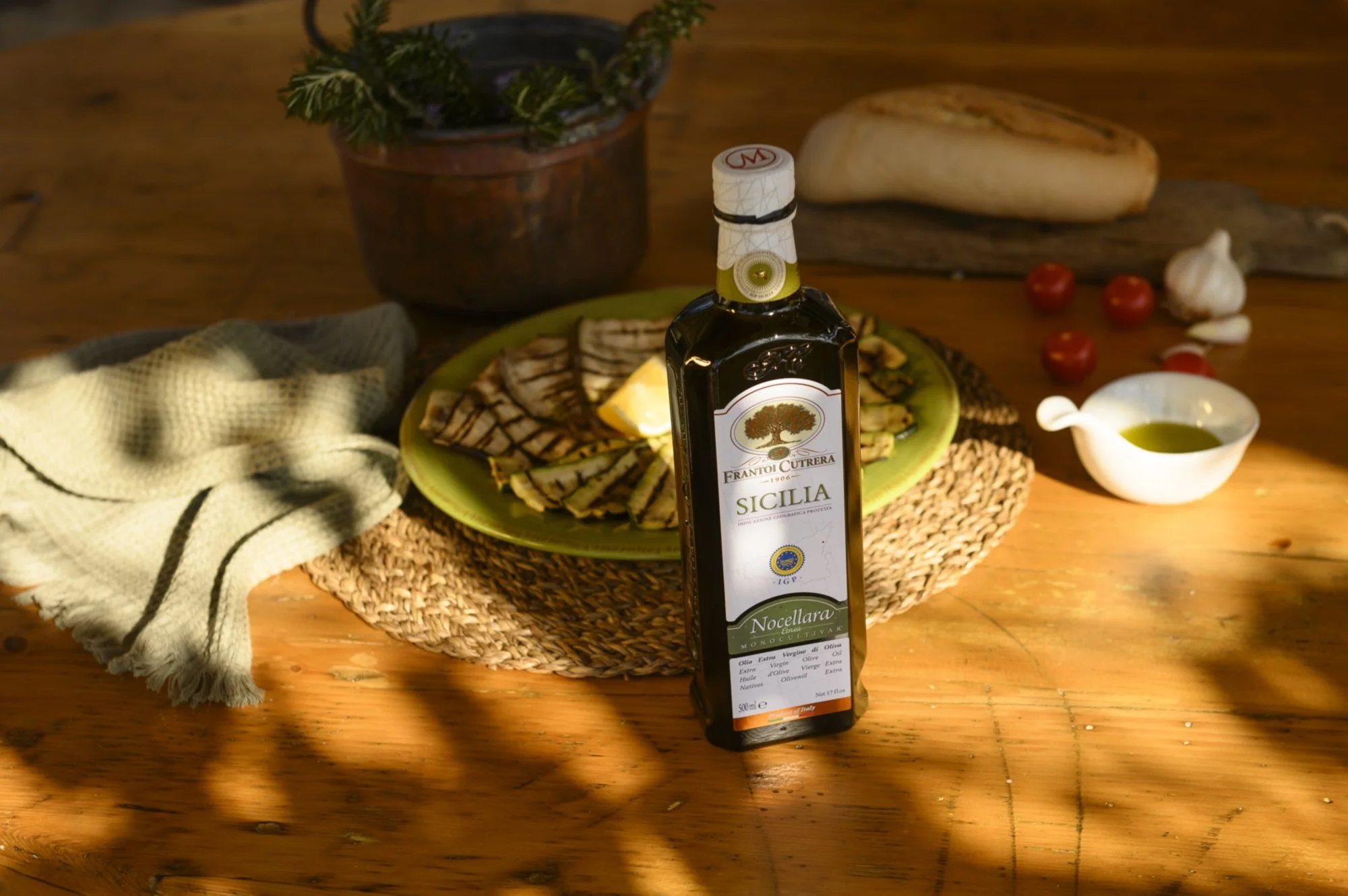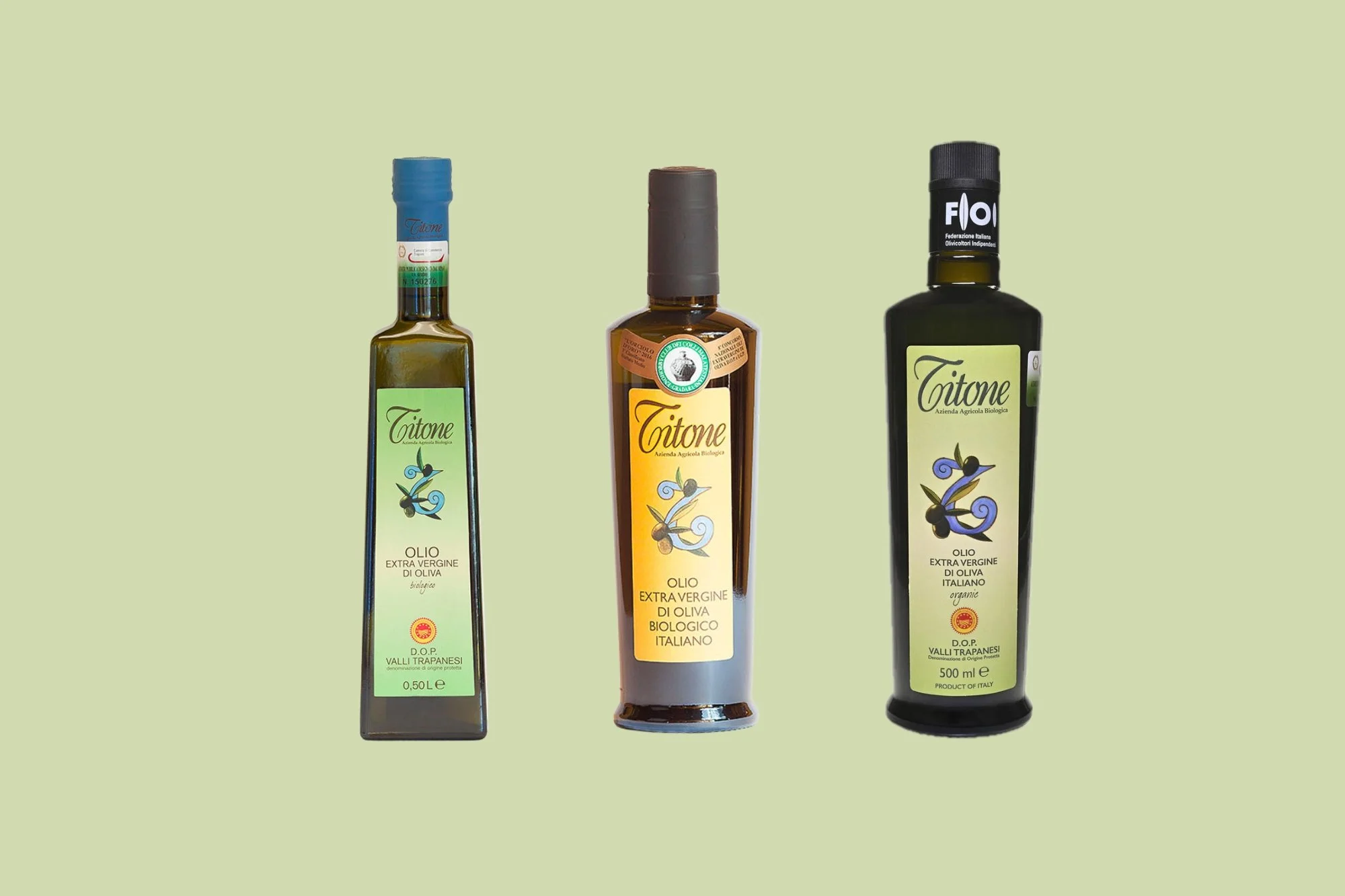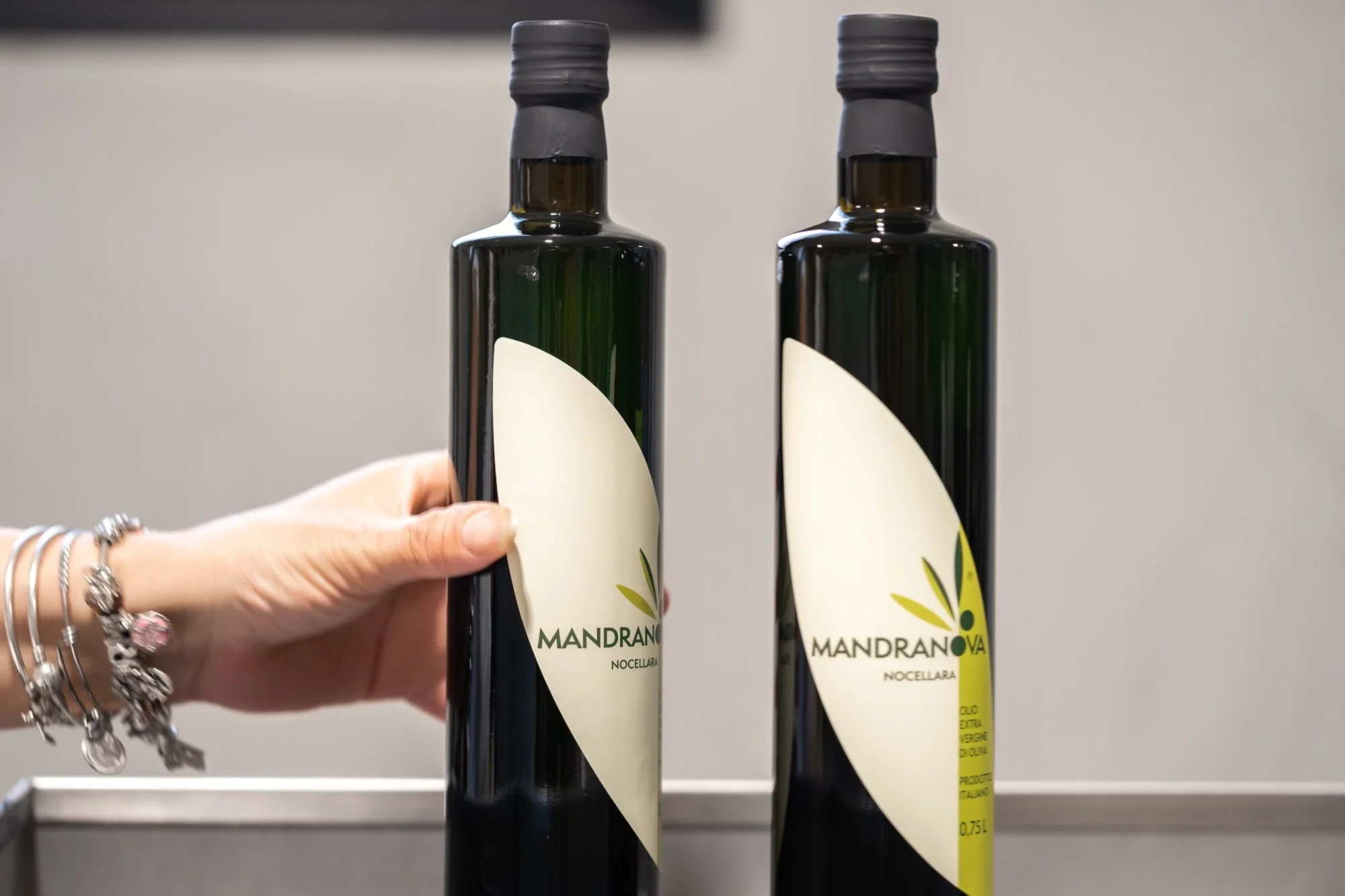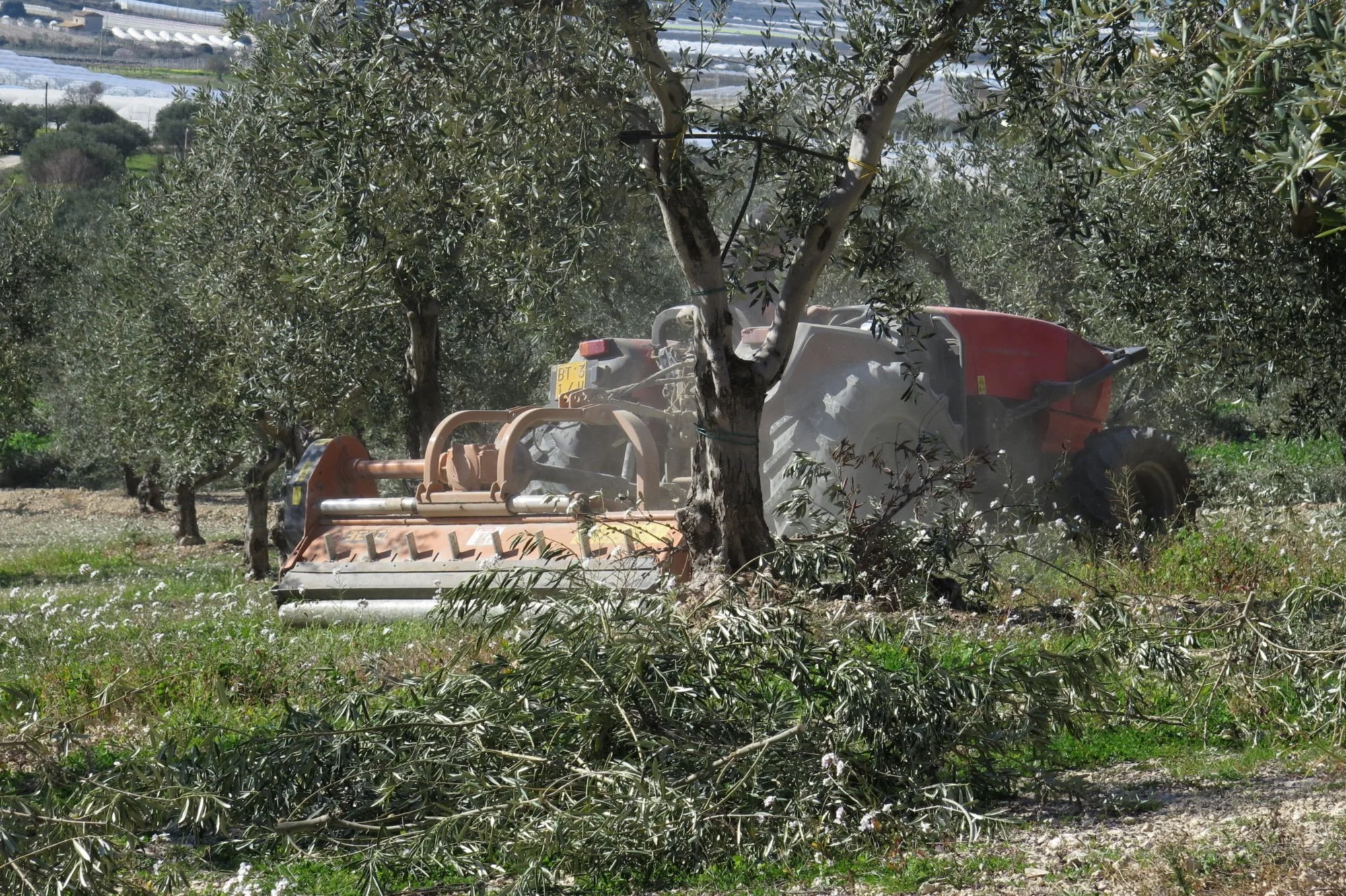The Great Olive Oils of Sicily
Olive harvest in Sicily photo credit Cutrera
Sicily and olive oil are inextricably linked. Sicily, the biggest island of Italy and in the whole Mediterranean sea, standing between the boot-shaped country and the northern shores of Africa with its triangular shape, is well known for its lavish and flavor-filled cuisine: delicious fried bites, pasta timbales, seafood extravaganza, a kaleidoscopic array of eggplant based recipes, ricotta (and pistachio) powered sweet treats, and much more. A beguiling culinary heritage resting both on the several cultural contaminations from the past centuries – from Arabs to Spanish, and more, to the brilliant skills of local cooks, and to the thriving abundance of extraordinary produce.
Extra-virgin olive oil is a key Sicilian ingredient that plays an increasingly important role in the island's culinary reputation. The Sicilia PGI covers coastal areas to altitudes of up to a thousand meters in the inner zones, including the majestic century-old olive trees called “Ulivi Saraceni,” whose presence in the area dates back to the period of Arab domination.
In addition, six different PDOs enhance peculiar territories and varieties showcasing the island's remarkable olive-growing heritage: Monti Iblei, Valli Trapanesi, Val di Mazara, Monte Etna, Valle del Belice, and Valdemone. They all refer to particularly fruitful and renowned production areas, which are the grounds of major varieties such as biancolilla, cerasuola, moresca, nocellara del Belice, nocellara etnea, ogliarola messinese, and tonda iblea. This gives rise to a charming array of different scents, intensities, and flavors, uniquely enriching Sicilian recipes.
Cutrera, in the heart of the Hyblaean Mountains, where Tonda and Moresca grow
Olive trees in Sicily photo credit Cutrera
Baroque churches and palaces, charming hamlets and fishing villages, spellbinding beaches and bays in maritime natural reserves, and gentle hills and low mountain slopes covered with olive trees: the southeast of Sicily boasts an incredible array of wonders, including olive oil. Here, the true star of olive growing is Tonda Iblea, at the base of many of the PDO Monti Iblei oils, taking the name from the beautiful Hyblean uplands. It is also excellent as table olives; the fruit gives medium-intense fruitiness, well-balanced bitterness and spiciness, and lovely notes of green tomato and tomato leaf (and sometimes a gentle basil flavor), making them perfect for enriching many seafood recipes without overwhelming them.
Frantoi Cutrera olive oil
In Chiaramonte Gulfi, Frantoi Cutrera has been growing olive trees since 1906 and milling olives since 1930. The reason why the company is amongst the most respected and appreciated in Sicily (and beyond) does not rely solely on history: up-to-date milling techniques and a deep care in growing, harvesting, and processing olives (as well as grapes) lead to outstanding products. Their Primo – the first oil labeled as PDO Monti Iblei, obtained from the first-harvested trees of Tonda Iblea – is an intense, robust, and fragrant oil, with pronounced notes of green tomato, freshly cut grass, and fresh aromatic herbs.
Yet, here and in other areas of the island, they also cultivate different varieties, producing both excellent blends and single-varietal extra-virgin olive oils that highlight their unique features. For instance, their Moresca monocultivar is a beautiful expression of the outstanding balance of this lesser-known variety: a gently scented olive oil with herbaceous hints of green grass and freshly cut grass, and a delicate almond aftertaste, which pairs perfectly with fish crudités and seafood salads.
Tondo.oil, everything about the Tonda
Another remarkable company from the Hyblaean area is Tondo.oil: a family run agricultural business based in Buccheri, a lovely village at 800 meters high on the slopes of Monte Lauro, they carefully grow the olive trees owned by the family since 1700 and scattered on different slopes of the small Sant’Andrea valley (500 to 600 meters above sea level), embracing an organic-regenerative agriculture aimed to respect the land and the trees, and to make an excellent products: Nobili Time, a blend from local varieties growing on the Hyblaen Mountains area, and Urbe Chic, only obtained from the century-old groves in the Buccheri area, close to the Sant'Andrea medieval church, where Tonda Iblea trees grow. "Tondo" indeed, refers to the olive variety that is the true queen of this area, but also to the circularity of the natural cycles, deeply respected in every production step, and to the round and pleasant organoleptic profile of the single variety extra virgin olive oil: perfectly balanced, versatile and harmonious, bearing all the main characteristic of Tonda Iblea, with intense, fresh notes of green tomato, almond, artichoke, cut grass and fresh aromatic herbs, and a full-bodied mouthfeel, with a neat yet perfectly balanced presence of bitter and spicy.
Where to pour it? Try rich vegetable recipes, roasted or grilled fish, and grilled meats. Or even on an intense soup, such as the local "fave alla trappitara": a creamy soup of dried broad beans boiled with garlic, black pepper, oregano, fennel seeds, and a generous dose of oil, traditionally eaten to celebrate the newly milled oil.
Titone, an ode to Cerasuola
On the opposite side of the island, towards the western end, where the coast between Trapani and Marsala overlooks the small, pristine, and wild Aegadian Islands, the PDO Valli Trapanesi includes approximately 6,000 hectares where mostly nocellara del belice and cerasuola olive trees grow. Also common in the Val di Mazara PDO area, cerasuola bears its name from the round shape and the reddish-purple color the fruit takes on when it is fully ripe, resembling a cherry (cerasa, in local dialect). It yields a medium to intensely fruity extra-virgin olive oil, bitter and spicy, with hints of cut grass, almond, and tomato leaves.
Olive harvest in Sicily photo credit Cassarà
And amongst the most interesting examples, the PDO Valli Trapanesi by Titone stands out. Born as a blend of cerasuola, nocellara del belice, and biancolilla (as it still is for the excellent organic extra virgin), it is now a cerasuola monocultivar: "Or, I'd rather call it a blend of different cerasuola olives harvested in different moments along October, and from different groves. Over the years, we realized that certain groves give outstanding results, and we want to enhance them", Antonella Titone explains. A former pharmacist, like many others in her family, she left her job to follow in her father's footsteps, both of them adding their knowledge of health and nutraceutical properties of olive oil to olive growing and milling. "We always harvest different varieties separately, but given the large presence of cerasuola, we can also make different olive oils based on harvesting time, grove, and processing techniques", Titone says. This way, they make different oils that they then carefully blend to achieve every year a harmonious and more complex olive oil, while respecting the variety's features, "Cerasuola has a well-defined green profile, with intense notes of grass, herbs, and artichokes. We realized that blending different products from the same variety, we could get a bit more complexity: it tastes almost like there is a bit of nocellara, too; but there is not".
Titone olive oils
Titone PDO Valli Trapanesi is a fantastic extra virgin, with medium-intense fruitiness, pronounced vegetal notes with hints of aromatic herbs and wild greens such as arugula, chard, and bitter cabbage, and a bitterness which never results in overdone. This is why it's perfect with the Mediterranean recipes of Sicilian cuisine, such as pasta con le sarde (fresh sardines, anchovies, wild fennel leaves, pine nuts, and raisins) or with the Trapanese pesto fresh basil, almonds, tomatoes, pecorino cheese, and garlic), or even with grilled seafood such as a tuna steak.
Mandranova, the art of Nocellara (del Belice)
Mandranova olive oils
The Valle del Belice PDO shares the name with the vast and hilly valley that unfolds along the course of the river Belice (the accent goes on the "I", but also in Italy, many put it on the first "e") in the western part of Italy, between the provinces of Palermo, Trapani, and Agrigento. Rich in natural beauty (including the Natural Reserve of Grotta di Entella), art, and archaeological sites bearing witness to the Greek and Phoenician settlements, the area was shaken by a terrible earthquake in 1968. Today, the area thrives on beautiful beaches, vineyards, and olive groves, with nocellara del belice being a prominent presence. Also very good as table olives, the fruits yield intensely scented extra-virgin olive oils, with a distinct green profile reminiscent of several herbs and botanicals, as well as green tomatoes. The bitterness is medium, while the finish exhibits a gentle pungency.
Cultivation of olives at Mandranova
At a short distance from the stunning Agrigento temple ruins and the seashore, nestled in the hills of Palma di Montechiaro, centuries-old olive groves, palm gardens, and African plants surround Mandranova, a charming residence and farm that produces extra-virgin olive oil, preserves, and almonds. In the late 1990s, Silvia and Giuseppe Di Vincenzo decided to dedicate themselves to managing the family’s farm, leaving their banking jobs behind. Today, the grove counts 9,000 trees of typical Sicilian varieties (biancolilla, cerasuola, giarraffa, nocellara) and coratina from Apulia, to which 3,000 new plants have been added. The old farmhouse, railway tollhouse, stables, and agricultural warehouses have been transformed into spaces dedicated to hospitality, also hosting international artistic residencies whose site-specific results enhance both the indoor and outdoor areas. The restaurant serves traditional dishes, interpreted with the style and technique of Gabriele, Silvia, and Giuseppe’s son.
Their nocellara displays an intense fruity profile, with beautiful scents of fresh grass, artichoke, and green tomato, and has very well-balanced bitter and spicy notes, making it perfect for seasoning bluefish carpaccios and marinades, gratiné vegetables, and pasta with seafood such as mussels or clams.
Sarullo, and the gentle charm of Biancolilla
Olive oils from Olio Sarullo
Once upon a time, during the Norman domination, Sicily was divided into "giustizierati" (provinces) also named "valli." Val di Mazara today names one of the island's olive oil PDOs, and a vast stretch of land (approximately 35,000 hectares) between Palermo and Agrigento, where olive growing has ancient origins, rooted in mythology and supported by both archaeological findings and the genetic heritage of local olive varieties. The most common ones are biancolilla, nocellara del belice, and cerasuola, often flanked by lesser-known varieties such as giaraffa and santagatese.
Olio Sarullo olive trees
Setting itself apart from the general opinion about Sicilian olive oils as bold and intense – primarily referring to tonda iblea and nocellara, biancolilla extra-virgin olive oil exhibits a gentle and delicate character, making it perfect for accompanying the local seafood cuisine. And biancolilla has always been the primary focus for the Sarullo family, running their farm in the countryside near Ribera, a lovely place set amidst the Sican mountains and the sea, quite close to the archaeological site of Agrigento Valley of the Temples, also famous for the delicious oranges. Named after Gaspare Sarullo, but initially founded by his grandfather, Giuseppe Inga, at the beginning of the 1900s, Olio Sarullo is now being run by siblings Calogero, Vania, and Maria Carla Sarullo.
Their Val di Mazara PDO extra virgin is made with hand-picked biancolilla olives growing on the Calamonaci hills and their surroundings, processing them as quick as possible in the modern mill: this results in a delicate, sweet-forward extra virgin olive oil, with gentle scents of green olives and a sweet touch to the palate, finishing with a lightly pungent aftertaste. The ideal pairing? Drizzle it over a raw Red King prawn from Mazara Del Vallo to enhance its succulent texture and delicate, yet distinct, flavor.









